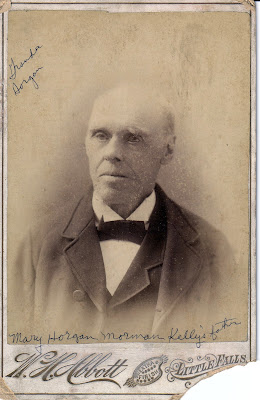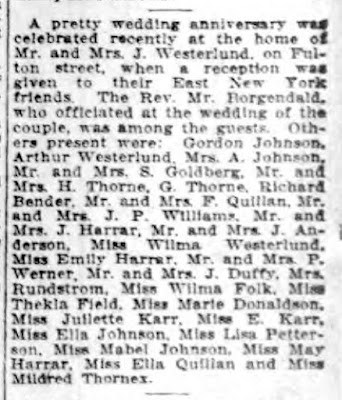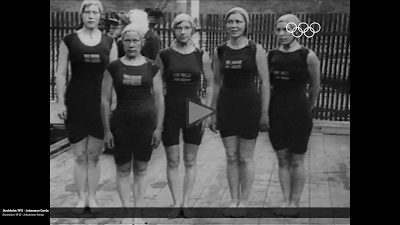There are quite a number of different tests (and prices!) available on the market from which to choose, and I decided to go with two of the most common: AncestryDNA and 23andMe. For the user, the test procedure is really simple: they send you a plastic vial and mailing envelope; you drool or spit into the vial; close the cap and shake; send it back to them in the envelope; and then sit back and wait a few weeks for your results. The testing service will compare your results with that others have submitted and report back to you the degree of similarity, possible relationship (e.g., 4th – 6th cousins), and a link to contact those persons if you want. They can also compare your results with those from people living in different parts of the world and suggest areas from which your ancestors came. Here are my results produced by AncestryDNA:
This is their “ethnicity” estimate, with fully two-thirds of my “ethnicity” linked to Ireland; another 14% to Great Britain; and a final 14% from Scandinavia. There's some variation in all of this, but it generally confirmed what I thought I knew simply from the ethnicity of my grandparents, three of whom were Irish and one Swedish.
ArkivDigital is a Swedish company that provides access to the thousands and thousands of pages of Swedish documents. About 16 months ago they ran a small promotion in which they offered to have one of their experts help possible users to find where their ancestral emigrants came from in Sweden. I was then very unsure about my great grandmother, Johanna Charlotta Barthelsson. Just to help you get oriented, she was the mother of my grandfather Fredrick Johnson. Their expert, Kathy Meade, got back to me with records from her birth to her emigration to the U.S. in 1882. With that toehold I've been able to dig backwards and forwards through the records, in the process discovering (for me, anyway) a whole new part of the family that I never knew about.
As I've mentioned before, when you add records to ancestry.com their software searches in the background for additional sources of information that correspond to the data you've saved. In addition to official documents, another source of hints are the family trees of other users. You have to treat these user-trees with a good deal of caution: often they're completely undocumented, they might just be old, inaccurate family stories, and it's very, very easy to either make mistakes or jump to wrong conclusions. I will admit to occasionally having committed all of these sins myself, and I'm trying to learn and put into use best practices for documenting genealogies.
As I was entering church records from the Barthelsson family, I began to find something a bit strange in the other family trees. When I followed the family back a few generations, I found some trees in which the last name was a bit different. I don't mean the typical spelling variants: Barthelson, Barthelsson, Bertilsson, Bartelsson, etc. No, these records had an additional word, for example, Bertil Henriksson Lehmoinen. This added word didn't seem to show up anywhere in the records, it's not a Swedish word … what was it? To find an answer I sent an email to the person who maintains one of the more extensive of those trees. His answer opened up a whole new world that I never knew existed.
It turns out that Lehmoinen is a family name, and specifically it is a Finnish family name. Records in the archives for this family go back to the 1430's! The family turns out to be part of a group known as the Forest Finns. Here's the story as I understand it. In the sixteenth and seventeenth century the empire of Sweden included not only the country we know today, but also Finland and part of northwestern Russia. The peoples of eastern Finland farmed using a form of slash-and-burn, or swidden agriculture. When a family group moved into a new area of forest, they would cut down the trees, girdle the larger ones, and allow the trees to die and dry out over the course of the next year. Then, shortly before rains came, all of the accumulated wood would be burned, the ashes worked into the soil, and then the field would be sown with rye. For the rest of the year the rye would grow along with other grasses and plants that invaded the now opened areas. Livestock would be allowed to graze during this time. The next year, though, things would get serious, livestock excluded, and the rye grain would be harvested. This form of agriculture quickly depletes the nutrients in the soil, and in a short time the family would have to move on and repeat the cycle in a new forested area. This means that the land can only support relatively small numbers of people, and this part of Finland eventually became overpopulated.
Here is a painting made in 1893 by the Finnish artist Eero Järnefelt called “Under the Yoke” that illustrates part of this process.
I also found a video, dating from 1937, on YouTube that illustrates this. It runs for about thirteen and a half minutes. I presume – but am not positive – that the language is Finnish. But I think you'll be able to follow it. I especially like the guy that makes a pair of shoes out of birch bark! Notice that these are the same style as the girl in the center of the Järnefelt painting.
To ease the population pressure, a good number of the people from central Finland, particularly the area of Savolax (or Savonia), migrated west, across the Gulf of Bothnia, to settle in central Sweden. In particular, the migrants from our family settled in northern Värmland in the western part of central Sweden, almost directly west of Stockholm and near the Norwegian border. At first the Swedish government encouraged the migration as it increased the population in the border region, thus contributing to its security. As the mining sector grew, though, the need for wood to make charcoal increased, and the practice of simply burning down parts of the forest became unacceptable. The Forest Finns were then forced to become more traditional farmers, miners, or enter other suitable occupations.
The Forest Finns moved into Värmland around the 1640's. They seem to have retained much of their culture and language before eventually being absorbed into Swedish culture. The language survived until the early part of the 20th century, and I understand that in that part of Sweden many placenames are still Finnish. The names of the people that you can find in the household examination records of the church are only the Swedish versions. There is one book for Östmark parish, however, in which the Finnish names are also recorded.
Anyone looking into Forest Finn history quickly comes across the name of Carl Axel Gottlund (1796–1875). Gottlund grew up in Finland, in Savonia, the son of a Finnish father and Swedish mother. He became one of the great proponents of Forest Finn culture, both in Sweden and Norway. In fact his political agitation eventually led to his exile. He first travelled to Dalarna in 1817 and then to Värmland in 1820–1821. He published a diary of his travels in Värmland in which he not only describes what he sees, but names names and places. The diary is online at www.nordvarmland.com/istid/ Of course, it's in Swedish. You can use the Google translate function and get a bit of an idea of what he says, but the translation is pretty dodgy.I mentioned the diary because in one part of it it gets pretty personal. Here we're back to the Lehmoinen family. Gottlund describes a double wedding on November 4, 1821, the first pair being Hindrik Hindriksson Lehmoinen and Maria Bengtsdotter Manninen; the second couple was Pehr Hallesson and Maria Hindriksdotter Lehmoinen. For context, Hindrik and the two Marias all are my 2nd cousins 5x removed. Here's my translation (apologies in advance!) of a section from Gottlund's diary describing the scene:
"After I had eaten a little, I went to church and sat on a bench with some farmers at the door. Frychius preached, after the sermon, I went to him in the sacristy, the door of which was behind the altar, much as in Fryksände. The township was mostly Finns. As there was no Communion, the service was almost over. As it ended, two Finnish peasant boys began playing an old march at the altar rail. During the sermon, they had been in the sacristy and tuned their violins. It so happened that there were two brides in the church. They sat in the nearest benches to the choir. They were both from Finnskoga, the most repectable farmsteads in the township and also the richest in Finnskoga. The wedding, which I thought to attend uninvited, would tonight be in Kronskoga.
One couple was Hindrik Hindriksson Lehmoinen, the son of the farmstead, and the bride Mari Bengtsdotter Mammoinen from Rattsjöberg. The second couple was the daughter of the farmstead, Mari Hindriksdotterr Lehmoinen and the groom a Swedish boy from Häckfalle. It was therefore, son and daughter, now to be married at the same time. The brides, who were sitting next to each other, were truly magnificently arrayed. They were dressed in white silk, on which were sewn several rows of roses and other flowers, glistening a little here and there, and looking very charming. Then they had black skirts, with red patches under the breast as a breastplate, which were studded with tufts of ribbon roses, flowers and glitter of all kinds. The grooms were dressed like complete dandies, the Finnish boy had his gray Finn coat, the other his black Värmland shirt, and then both had red [pale] bands that were sewn on the back, shoulders and chest, a red ribbon bow on the shoulder, on the arms, etc., all of which made them more like a Harlequin, and into the bargain there hung three pieces shiny riksdalrar [coins], one from each of the red ribbons, one behind each shoulder and in the middle of the back. Furthermore, their hair was powdered and doctored so that they were complete dandies."
The couple in the picture are wearing what was advertised on the Web as traditional wedding clothes for Värmland. Although it's not exactly as Gottlund described, I think you can probably get an idea of what he was talking about. As the text continues he describes the ceremony, wedding meal: fish, meat, capercaillie roast, salty cabbage soup, beer, and schnapps.
“Eventually, I became acquainted with the host, we became fairly good friends. My recommendation from the priest helped, as well as my flutes, and most important was my Finnish language. Nearly everyone was Finnish, except some Swedes from Häckfalle, 3 or 4 in number. And Finnish was spoken everywhere.... The priest confessed that he thought the Finns never used their mother tongue as much as now. In particular, after they had a few glasses of acquavit, he never heard a Swedish word.”
Afterwards the dancing began, and, interestingly, while the brides danced, the two grooms did not. But the priest's sister did, reportedly the best polka dancer of them all. Actually, Gottlund only got part of the story of interrelationships right. Pehr Hallesson was only half-Swedish, his mother was Finnish. Maria Hindriksdotter was not the daughter from the farm, but a niece who seems to have been raised in the family of her aunt and uncle. Hindrik and Maria Bengtsdotter were first cousins, and Maria had lost her mother in the past year (her father had died some 14 years earlier). Hindrik and Maria went on to have four children. Pehr and his Maria never had any children.
Back to the modern day. This year cousin Ann Meyer Nordström and her husband travelled to the old family stomping grounds in and around the town of Östmark. The colors on the map suggest that much of the land is forested, and Anne gave me permission to share some of the pictures of the landscape in the area. It reminds me so much of central New York that I immediately felt at home.This next clip from YouTube is a Finnish father and son (I assume), Sigurd (the father) and Bernt Ruotimaa (the son). The piece they're playing is called Livet i Finnskogarna, or, Life in the Forests of the Finns. In preparing this post I've gone through a half dozen versions of this song and listened to it probably 20 times. It may be my sentimental side, but somehow it just makes me feel good.
Now I look back at that map produced by AncestryDNA and realize that there was more to it, much more, than I'd initially imagined! Thanks to Ann for sending the pictures from Värmland and allowing me to share them with you. Apologies for my weak Swedish and non-existent Finnish. I'm working on the Swedish, though, and promise that I will get better. And finally, please excuse the mistakes and oversimplifications of Swedish and Finnish history. Every day I learn more and more.














































